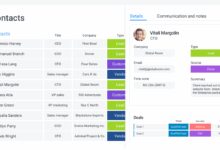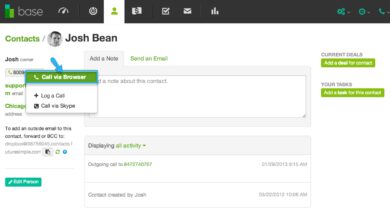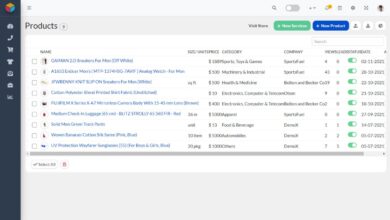PLG Based CRM: 7 Powerful Benefits You Can’t Ignore
Ever wondered how some companies seem to effortlessly grow their user base and boost retention? The secret might just be a PLG based CRM. It’s not just another buzzword—it’s a game-changer for modern businesses.
What Is a PLG Based CRM?

A PLG based CRM stands for Product-Led Growth Customer Relationship Management. Unlike traditional CRMs that rely heavily on sales teams to drive customer acquisition, a PLG based CRM puts the product itself at the center of the growth strategy. This means users experience the product first—often through free trials or freemium models—before engaging with sales.
Defining Product-Led Growth (PLG)
Product-Led Growth (PLG) is a go-to-market strategy where the product is the primary driver of customer acquisition, conversion, and expansion. Instead of relying on outbound sales or heavy marketing campaigns, companies let the product’s value speak for itself.
In a PLG model, users sign up, explore features, and experience value quickly—often without talking to a salesperson. This self-serve model reduces friction and scales efficiently. According to ProductLed, companies embracing PLG grow 2–3x faster than traditional models.
How CRM Fits Into the PLG Model
Traditionally, CRM systems like Salesforce or HubSpot are built for sales teams to track leads, manage pipelines, and close deals. But in a PLG based CRM, the focus shifts from managing sales reps to empowering users.
The CRM integrates with product usage data, tracks user behavior, and triggers personalized onboarding or engagement workflows. For example, if a user hasn’t used a key feature in 7 days, the PLG based CRM can automatically send a targeted email with a tutorial. This proactive engagement boosts activation and retention.
Key Differences from Traditional CRM
Traditional CRMs are sales-led. They track interactions like calls, emails, and meetings. A PLG based CRM, on the other hand, tracks product interactions: logins, feature usage, time spent, and conversion events.
- Sales-led CRM: Focuses on lead scoring based on demographic data.
- PLG based CRM: Scores leads based on behavioral data from product usage.
- Sales-led: Manual outreach by reps.
- PLG based: Automated, in-app messaging and email sequences.
“In a product-led world, the product is the salesperson.” — Wes Bush, Author of Product-Led Growth
Why PLG Based CRM Is Revolutionizing Customer Engagement
The rise of digital products and self-serve platforms has changed how customers expect to interact with software. A PLG based CRM meets these expectations by delivering hyper-relevant, timely, and personalized experiences.
Real-Time User Behavior Tracking
One of the biggest advantages of a PLG based CRM is its ability to track user behavior in real time. Every click, feature usage, and session duration is captured and analyzed.
This data allows companies to segment users based on actual behavior, not just demographics. For example, users who complete onboarding but don’t use the reporting feature can be targeted with a tutorial. This level of precision wasn’t possible with traditional CRMs.
Automated Onboarding & Nurturing
Onboarding is critical in a PLG model. If users don’t see value quickly, they churn. A PLG based CRM automates this process by triggering in-app messages, emails, and tooltips based on user actions.
For instance, if a user signs up but doesn’t invite team members, the CRM can send a personalized email with a template for collaboration. This reduces friction and increases time-to-value (TTV).
Reduced Dependency on Sales Teams
In traditional models, sales teams are the gatekeepers to product access. In a PLG based CRM, users can explore, upgrade, and expand on their own.
This doesn’t eliminate sales—it redefines it. Sales teams can focus on high-intent users who’ve already experienced value, leading to shorter sales cycles and higher conversion rates. According to Gainsight, companies using PLG strategies see a 30% reduction in customer acquisition costs.
Core Features of a PLG Based CRM
Not all CRMs are built for product-led growth. A true PLG based CRM must have specific features that align with user-centric, data-driven engagement.
Product Usage Analytics Integration
The foundation of any PLG based CRM is deep integration with product analytics tools like Mixpanel, Amplitude, or Pendo. These tools feed behavioral data into the CRM, enabling segmentation and personalization.
For example, a SaaS company can identify users who’ve used the collaboration feature at least three times—indicating high engagement—and target them for upsell campaigns.
Behavioral Triggered Workflows
Unlike traditional email campaigns that blast messages to everyone, a PLG based CRM uses behavioral triggers. These are automated workflows activated by specific user actions—or inactions.
- User completes onboarding → Send a “Next Steps” guide.
- User hasn’t logged in for 5 days → Trigger a re-engagement email.
- User upgrades to paid plan → Assign a customer success manager.
This ensures communication is timely and relevant, increasing open and conversion rates.
Customer Health Scoring
A PLG based CRM calculates a customer health score based on usage patterns, support tickets, and engagement metrics. This score helps identify at-risk users before they churn.
For example, a drop in login frequency combined with ignored emails might flag a user as “at risk.” The CRM can then trigger a win-back campaign or alert a CSM to intervene.
Top PLG Based CRM Platforms in 2024
Several platforms are leading the charge in combining CRM functionality with product-led growth principles. Here are some of the most powerful options available.
HubSpot with Product Analytics Add-On
HubSpot has evolved beyond its marketing roots. With its Product Analytics tool, it now supports PLG strategies by syncing product usage data with CRM records.
Marketers can create segments like “Users who viewed pricing but didn’t upgrade” and run targeted campaigns. HubSpot’s automation workflows make it easy to nurture these users without manual intervention. Learn more at HubSpot Product Analytics.
Intercom as a PLG CRM
Intercom is a favorite among PLG companies like Canva and Loom. It combines messaging, help docs, and product tours in one platform.
Its “Product Tours” feature guides users through key features based on behavior. If a user skips the onboarding tour, Intercom can re-engage them with a chatbot offering a guided walkthrough. This reduces friction and increases activation rates.
Pendo + CRM Integrations
Pendo specializes in product experience platforms. While not a CRM itself, it integrates seamlessly with Salesforce, HubSpot, and Zendesk to create a full PLG based CRM ecosystem.
Pendo tracks feature usage, collects user feedback via in-app surveys, and segments users for targeted messaging. When combined with a CRM, it enables sales teams to see exactly how a customer uses the product—giving them powerful context before a call.
How to Implement a PLG Based CRM Strategy
Adopting a PLG based CRM isn’t just about buying new software—it’s a strategic shift in how you engage customers. Here’s how to get started.
Map the User Journey
Start by mapping out the entire user journey—from sign-up to activation, adoption, and expansion. Identify key milestones and friction points.
For example, if data shows that users who invite teammates within 48 hours are 3x more likely to convert, your PLG based CRM should prioritize that action with targeted nudges.
Integrate Product and CRM Data
The magic happens when product usage data flows into your CRM. Use tools like Segment or RudderStack to collect and route data from your app to your CRM.
Once integrated, you can create dynamic segments like “Users who used the API but haven’t upgraded.” These segments power hyper-targeted campaigns that drive conversions.
Design Behavior-Based Campaigns
Move away from batch-and-blast emails. Instead, design campaigns triggered by behavior.
- Activation Campaign: Triggered when a user completes onboarding.
- Re-engagement Campaign: Activated after 7 days of inactivity.
- Expansion Campaign: Sent when a user hits a usage threshold (e.g., 80% of storage).
These campaigns should be personalized, concise, and action-oriented.
Measuring Success: KPIs for PLG Based CRM
Without the right metrics, even the best PLG based CRM strategy can fail. Focus on KPIs that reflect user engagement and product value.
Time to First Value (TTFV)
TTFV measures how quickly a user experiences the core value of your product. In a PLG model, this should be as short as possible—ideally under 5 minutes.
A PLG based CRM can shorten TTFV by guiding users to key actions through in-app messages and tooltips. For example, Slack reduces TTFV by prompting users to send their first message immediately after sign-up.
Activation Rate
Activation rate is the percentage of users who complete a set of key actions that indicate they’ve gotten value. For Dropbox, it might be uploading a file and sharing a link.
A PLG based CRM tracks these actions and identifies drop-off points. If 60% of users don’t complete activation, the CRM can help test new onboarding flows to improve the rate.
Expansion Revenue
One of the biggest advantages of a PLG based CRM is its ability to drive expansion revenue. This includes upsells, cross-sells, and seat increases.
By tracking usage patterns, the CRM can identify users ready for upgrade. For example, if a team is consistently hitting storage limits, the CRM can trigger an in-app message offering a higher-tier plan.
Challenges and Pitfalls of PLG Based CRM
While powerful, a PLG based CRM isn’t without challenges. Understanding these pitfalls can help you avoid common mistakes.
Data Silos and Integration Complexity
One of the biggest hurdles is integrating product data with CRM systems. Many companies use separate tools for analytics, support, and sales, creating data silos.
Without a unified view, it’s hard to create accurate user segments. Invest in a customer data platform (CDP) like Segment to centralize data and ensure smooth CRM integration.
Over-Automation and User Fatigue
While automation is a strength of PLG based CRM, too much can backfire. Bombarding users with in-app messages, emails, and pop-ups leads to fatigue and churn.
Use frequency caps and allow users to opt out. Focus on quality over quantity—send fewer, more relevant messages.
Misalignment Between Teams
PLG requires alignment between product, marketing, and sales teams. If sales reps aren’t trained to handle self-serve users, they may disrupt the experience.
Establish clear handoff points. For example, when a user hits a certain usage threshold, the PLG based CRM should notify sales with context—usage data, feature adoption, and engagement history.
Future Trends in PLG Based CRM
The PLG movement is still evolving. As AI and machine learning advance, so will the capabilities of PLG based CRM systems.
AI-Powered Personalization
Future PLG based CRMs will use AI to predict user needs and deliver hyper-personalized experiences. For example, an AI model might predict that a user is likely to churn and automatically offer a discount or feature demo.
Companies like Zoho are already integrating AI into their CRM platforms to provide predictive insights and recommendations.
Embedded Analytics and Self-Service Insights
Users will expect to see their own usage data within the product. PLG based CRMs will offer embedded dashboards showing metrics like adoption rate, team activity, and ROI.
This transparency builds trust and empowers users to make decisions without needing a sales rep.
Deeper Integration with Customer Success Platforms
Customer success will become more proactive. PLG based CRMs will integrate with platforms like Gainsight and Totango to automate health checks, renewals, and expansion opportunities.
For enterprise customers, this means a seamless journey from self-serve to high-touch support when needed.
What is a PLG based CRM?
A PLG based CRM is a customer relationship management system designed for product-led growth strategies. It uses product usage data to drive user engagement, automate onboarding, and enable personalized communication without heavy reliance on sales teams.
How does a PLG based CRM differ from traditional CRM?
Traditional CRMs focus on sales interactions like calls and emails, while a PLG based CRM tracks product usage and user behavior. It automates engagement based on actions within the product, enabling self-serve growth and reducing sales dependency.
What are the key benefits of a PLG based CRM?
Key benefits include faster time-to-value, higher user activation, reduced churn, lower customer acquisition costs, and increased expansion revenue. It enables scalable, personalized engagement by leveraging real-time behavioral data.
Which tools support a PLG based CRM strategy?
Tools like HubSpot, Intercom, Pendo, Mixpanel, and Segment are essential. They integrate product analytics with CRM functionality to create a unified system for tracking, engaging, and growing users.
Can small businesses use a PLG based CRM?
Absolutely. PLG based CRM is scalable and cost-effective. Small businesses can start with freemium tools like HubSpot or Intercom and gradually build their strategy as they grow.
Adopting a PLG based CRM isn’t just a tech upgrade—it’s a strategic shift toward user-centric growth. By putting the product at the heart of engagement, companies can scale efficiently, reduce churn, and drive expansion. The future of CRM is not just about managing relationships—it’s about empowering users to succeed on their own terms. With the right tools and strategy, any business can harness the power of PLG based CRM to unlock sustainable growth.
Further Reading:





